The Apple vs Samsung debate is more than just specs and benchmarks—it’s a battle of vision, legacy, and evolution. To truly understand their rivalry, we must rewind the clock and witness their journey from humble beginnings to the 2025 flagships—the iPhone 16 Pro Max and the Samsung Galaxy S25 Ultra. This isn’t just a comparison. It’s a timeline of transformation, a story of two tech titans racing to define the future.
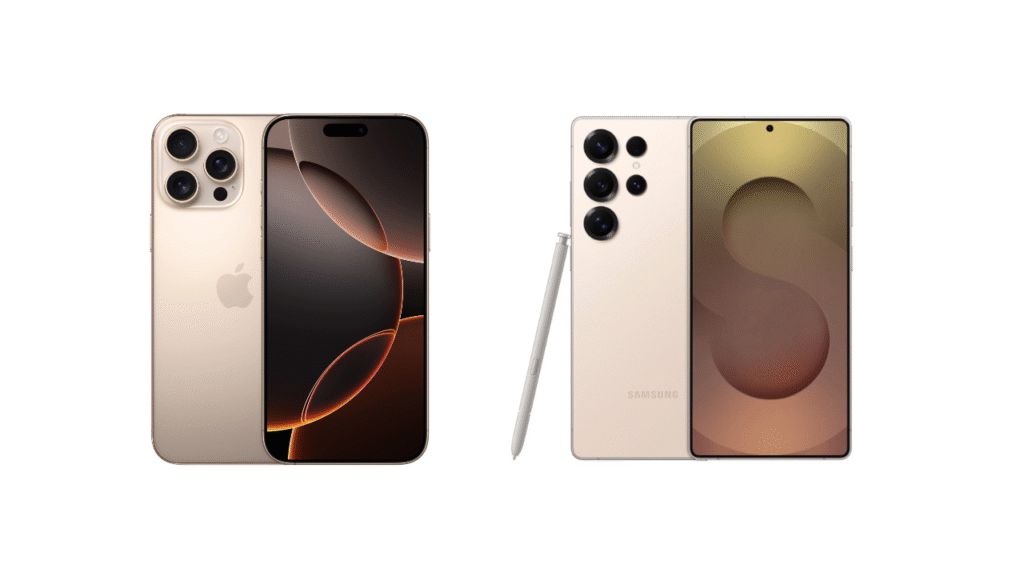
Table of Contents
The Beginning: First Steps into the Mobile World
Apple iPhone (2007)
Launch Date: June 29, 2007
Tagline: “Apple reinvents the phone.”
Specs:
3.5-inch LCD screen
2MP rear camera
No App Store
128MB RAM, 4/8/16GB storage
iOS (then iPhone OS) 1.0
Legacy: It wasn’t just a phone—it was the birth of the modern smartphone.
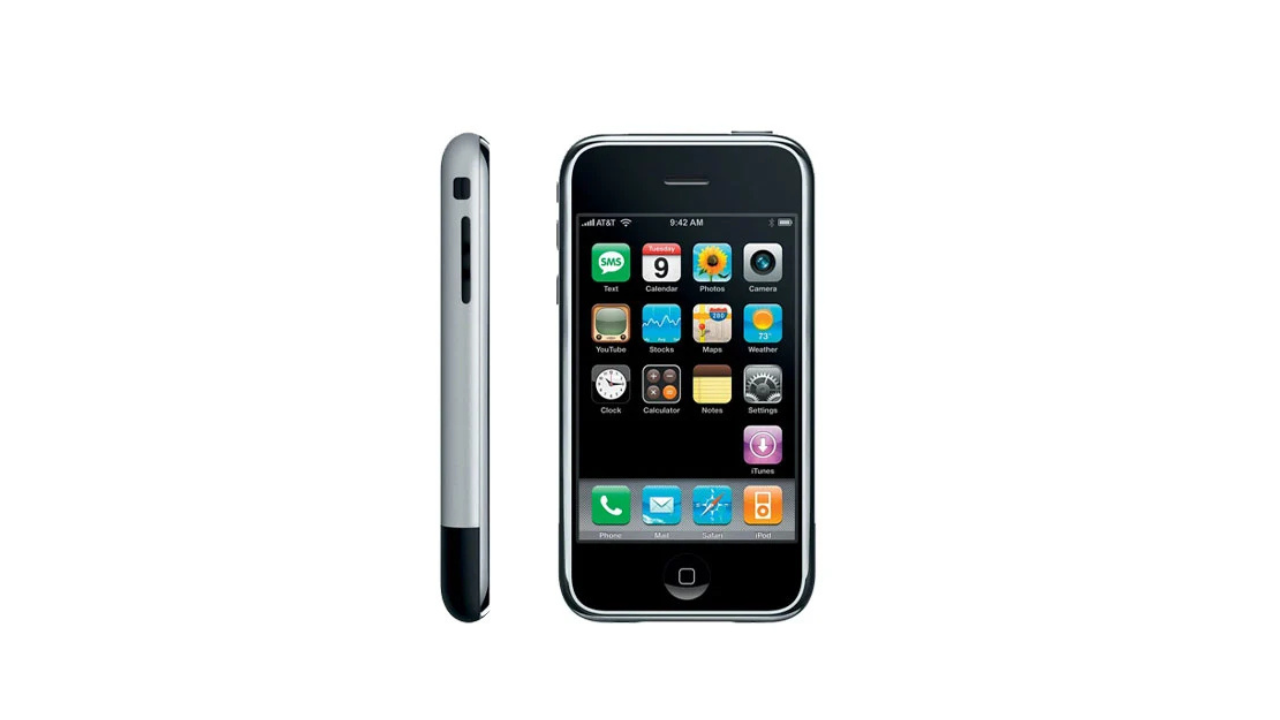
Samsung SGH-D500 / First Galaxy (Galaxy i7500, 2009)
Launch Date: Galaxy i7500 – June 2009
- Specs:
3.2-inch AMOLED display
5MP rear camera
Android 1.5 Cupcake
528 MHz processor, 128MB RAM
- Legacy: Although Samsung had a strong presence in the feature phone market, the launch of the Galaxy i7500 signaled its bold leap into the Android smartphone era.
Design & Build Evolution: Aesthetic Mastery
iPhone 16 Pro Max
Materials: Titanium frame, matte textured glass
Dimensions & Form Factor: Features a 6.9-inch flat-panel screen with a noticeably lighter build compared to its predecessor, the iPhone 15.
Design Language: Refined minimalism, symmetrical bezels, Action Button 2.0
Galaxy S25 Ultra
Materials: Armor aluminum, Gorilla Armor Glass
Size & Display: 6.8-inch curved AMOLED, edge-to-edge with built-in S-Pen
Aesthetic Design: Bold, next-gen design with sharp contours and a striking camera module that reflects Samsung’s forward-thinking style.
Winner: Samsung for innovation and feature integration. Apple wins for elegance and durability.
Display Comparison: Visual Brilliance
iPhone 16 Pro Max
Display Type: Super Retina XDR OLED
Resolution: 2796 x 1290 (460 ppi)
Refresh Rate: 120Hz ProMotion
Brightness: Up to 2500 nits
Galaxy S25 Ultra
Display Type: Dynamic AMOLED 2X
Resolution: QHD+ 3200 x 1440 (500+ ppi)
Refresh Rate: 1–144Hz adaptive
Brightness: Up to 3000 nits
Winner: Samsung—unmatched resolution, smoother adaptive refresh rate, and more vibrant visuals.

Performance: Silicon Showdown
iPhone 16 Pro Max
Chipset: Apple A18 Pro (3nm)
RAM/Storage: 8GB RAM, up to 2TB storage
OS: iOS 18 with Genmoji AI and Apple Intelligence
Galaxy S25 Ultra
Chipset: Snapdragon 8 Gen 4 / Exynos 2500 (region-based)
RAM/Storage: Up to 16GB RAM, 1TB storage
OS: Android 14 with One UI 7.0, Galaxy AI 2.0
Winner: Apple for raw CPU performance and efficiency. Samsung shines in AI multitasking and RAM.
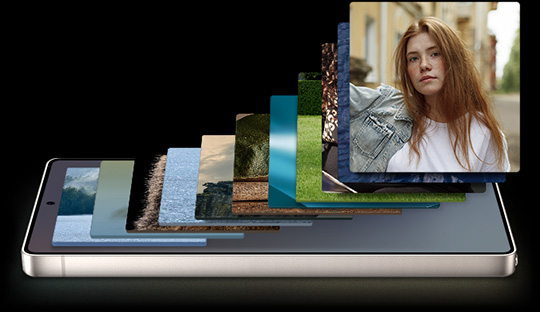
Camera Legacy: From 2MP to AI Photography
iPhone 16 Pro Max
Triple Camera:
48MP main (quad-pixel sensor)
12MP ultra-wide
12MP 5x telephoto
Features: ProRAW, Smart HDR 6, Spatial Video Recording for Vision Pro
Galaxy S25 Ultra
Quad Camera:
200MP main ISOCELL sensor
12MP ultra-wide
50MP periscope 5x zoom
10MP telephoto 3x zoom
Features: Nightography Zoom, AstroPhoto, AI Camera Enhancer
Winner: Samsung for versatility and hardware. Apple for computational photography and realism.

Battery & Charging: Powerhouse Devices
iPhone 16 Pro Max
Battery Life: Up to 30 hours video playback
Charging: 35W wired, 15W MagSafe, USB-C support
Galaxy S25 Ultra
Battery Life: All-day use with AI optimization
Charging: 65W wired, 25W wireless, reverse wireless charging
Winner: Samsung—faster, smarter, and more options.
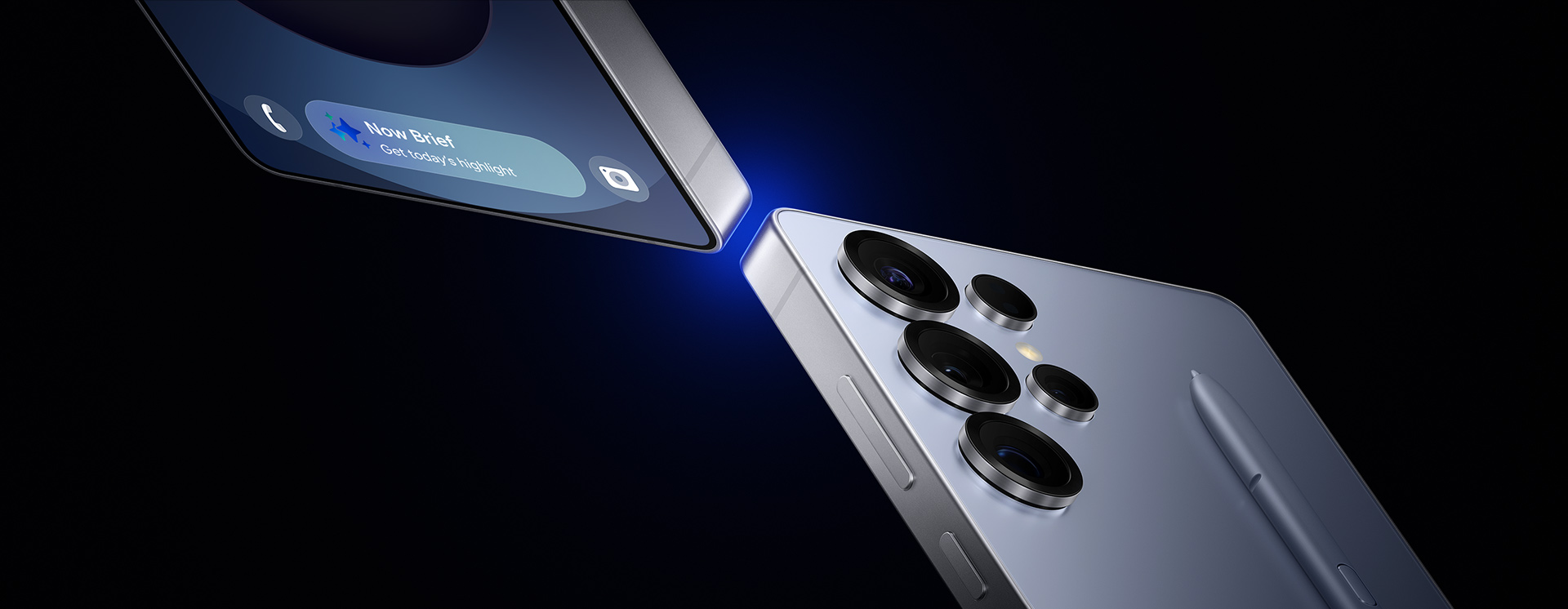
Software & Ecosystem: iOS vs One UI
iPhone 16 Pro Max
iOS 18: Privacy-focused, Apple Intelligence, deep ecosystem sync with Vision Pro, Mac, iPad
App Quality: Polished, uniform UX
Galaxy S25 Ultra
One UI 7.0: AI-driven UI suggestions, PC-level multitasking with DeX
Integration: Works across Galaxy tablets, watches, TVs, and Windows PCs
Winner: Apple for tight control and privacy. Samsung wins for flexibility and features.
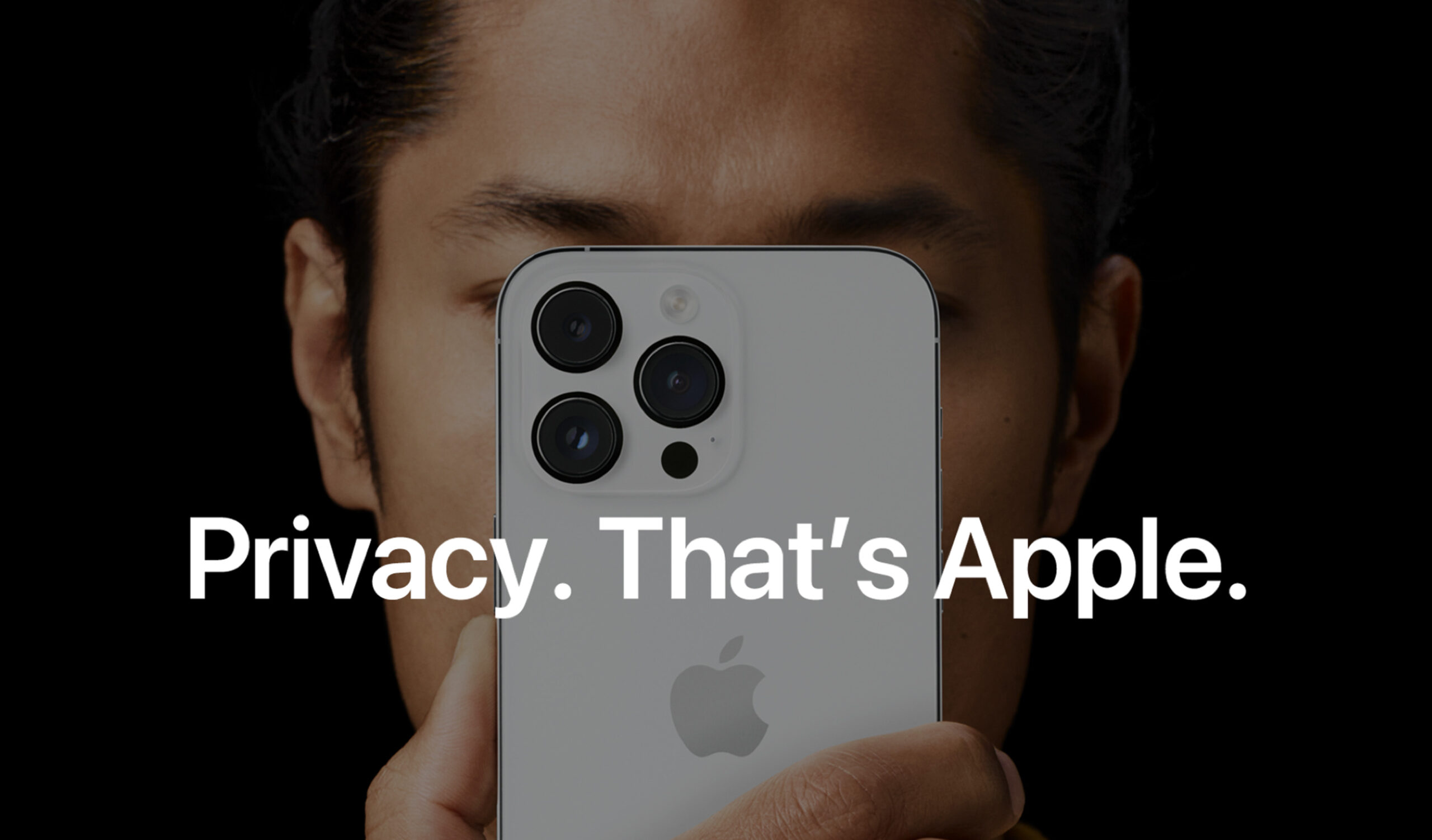
AI Features: 2025's Tech Frontier
iPhone 16 Pro Max
Apple Intelligence: Private Cloud Compute, AI-generated emojis, smart summarization
Siri Revamp: More contextual and natural
Galaxy S25 Ultra
Galaxy AI 2.0: Circle to Search, Live Translate, AI Note Creator, Generative Wallpapers
Winner: Samsung is more aggressive in AI rollout. Apple is closing the gap, prioritizing privacy at the core of its AI advancements.

Longevity, Updates, and Resale Value
Apple: iPhones receive 6 years of updates, retain highest resale value.
Samsung: Promises 7 years of security and OS updates from 2024 onwards.
Winner: Apple slightly edges out in resale, but Samsung now offers equal update support.

Price Comparison: Premium Comes at a Cost
iPhone 16 Pro Max
Starts at $1199
No charger included
Fewer discounts or bundles
Galaxy S25 Ultra
Starts at $1099
Bundled offers (buds, watches, credit)
Faster price drops and trade-in deals
Winner: Samsung for better value propositions and aggressive deals.

The Legacy Scoreboard: Evolution Snapshot
Feature Apple (2007 → 2025) Samsung (2009 → 2025) First Phone iPhone (2MP, no apps) Galaxy i7500 (5MP, Android) Current Flagship iPhone 16 Pro Max Galaxy S25 Ultra Display Retina OLED → Super Retina XDR AMOLED → Dynamic AMOLED 2X Camera 2MP → 48MP triple 5MP → 200MP quad Processor 412 MHz → A18 Pro 528 MHz → Snapdragon 8 Gen 4 Software iOS 1 → iOS 18 Android 1.5 → One UI 7.0 Charging No fast charging → USB-C, 35W Standard → 65W fast charging AI Features None → Apple Intelligence (on-device) None → Full suite with Galaxy AI 2.0
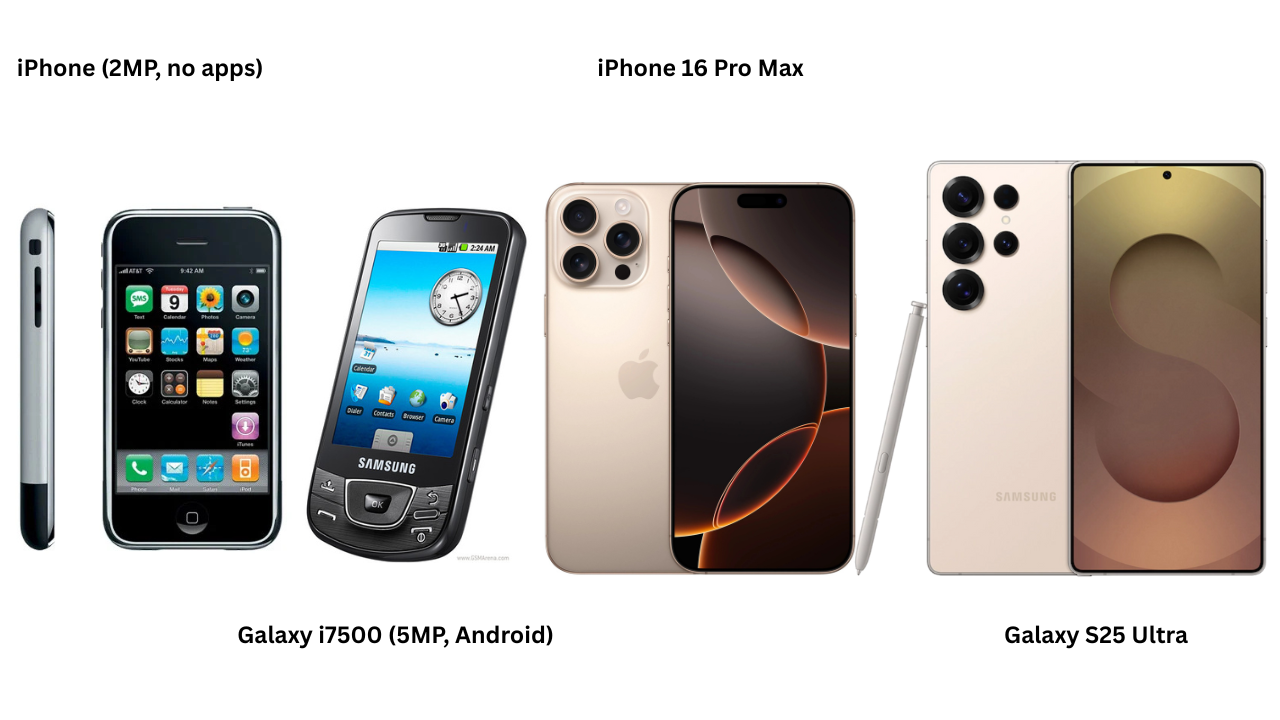
Final Verdict: Apple vs Samsung – Who Wins?
After a decade and a half of innovation, it’s clear:
Opt for Apple if you value polished design, robust privacy, years of reliable updates, and a seamless, high-end ecosystem that delivers without hassle.
Choose Samsung if you want power, features, AI innovation, value, and don’t mind experimenting with the bleeding edge of tech.
In the end, Apple vs Samsung isn’t about which is better. It’s about which is better for you.

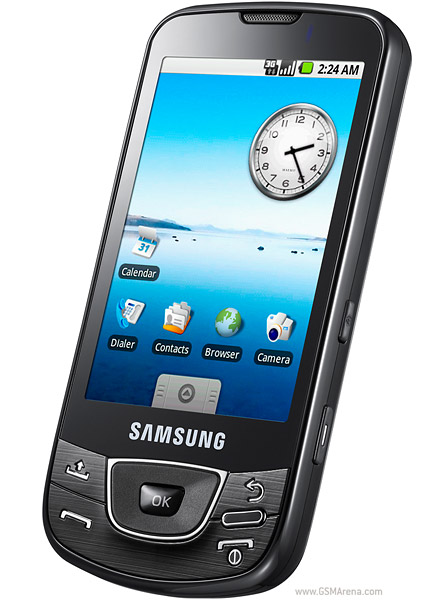

Pingback: What’s a Cricket Phone? And Should You Actually Get One? - phonetogadget
Pingback: Which is Better, A18 Pro or Snapdragon 8 Gen 4?: 7 Brutal Truths